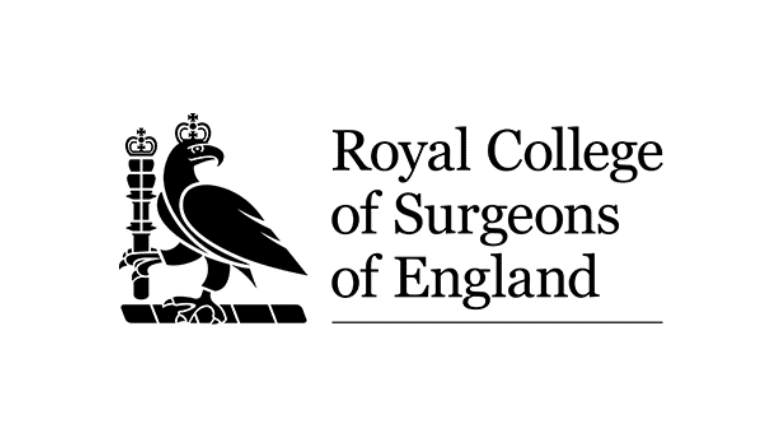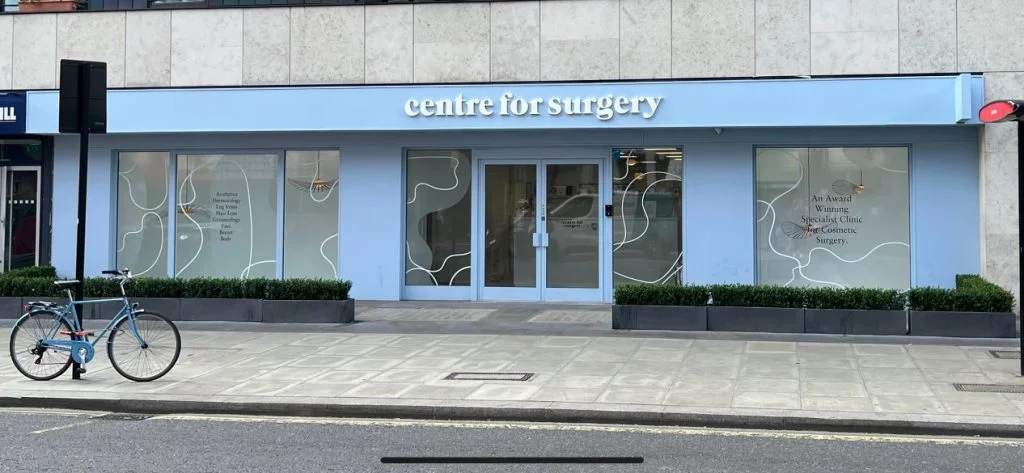-
PROCEDURES
-
NOSE SURGERY
- Rhinoplasty (Nose Job)
- Tip Rhinoplasty (Tip Plasty)
- Alar Base Reduction (Alarplasty)
- Septoplasty
- Turbinate Reduction
- Septorhinoplasty
- Ethnic Rhinoplasty
- Ultrasonic Rhinoplasty
- Preservation Rhinoplasty
- Revision Rhinoplasty
- Male Rhinoplasty (Nose Job for Men)
- One Stitch Nose Lift
- Nose Surgery FAQs
- Rhinoplasty Gallery
- Non Surgical Rhinoplasty
- Rhinophyma Surgery
- Laser Snoring Treatment (NightLase)
-
EYELIDS & FOREHEAD
- Blepharoplasty (Eyelid Surgery)
- Upper Eyelid Surgery
- Lower Eyelid Surgery
- Canthoplasty (Almond Eye Surgery)
- Asian Blepharoplasty (Double Eyelid Surgery)
- Revision Blepharoplasty
- Male Eyelid Surgery (Blepharoplasty for Men)
- Eyelid Surgery FAQs
- Blepharoplasty Gallery
- Tear Trough Filler (Under Eye Filler)
- SmoothEye Laser Treatment
- AccuTite
- Micro & Nano Fat Grafting
- Brow Lift (Forehead Lift)
- Endoscopic Brow Lift
- Temporal Brow Lift (Lateral Brow Lift)
- Hairline Lowering Surgery
- Forehead Contouring Surgery
- Osteoma Removal
-
FACE SURGERY
- Full Facelift & Neck Lift
- SMAS Facelift
- Deep Plane Facelift
- Mid Facelift (Cheek Lift)
- Lower Facelift (Jowl Lift)
- Mini Facelift
- One Stitch Facelift
- Revision Facelift
- Male Facelift
- Neck Lift
- Mini Neck Lift
- Male Neck Lift
- Facial Fat Transfer
- Chin & Neck Liposuction
- FaceTite
- Lip Lift
- Lip Reduction Surgery
- Dimple Creation (Dimpleplasty)
- Buccal Fat Removal
- Chin Surgery (Genioplasty)
- Chin Augmentation
- Chin Reduction
- Male Chin Surgery
- EAR SURGERY
-
BREAST SURGERY
- Breast Augmentation with Implants
- Mini Boob Job (Mini Breast Augmentation)
- Breast Implant Options
- Breast Implant Check
- Breast Implant Removal (Explant)
- Breast Implant Removal & Breast Lift
- Breast Implant Replacement
- Breast Implant Revision
- Fat Transfer Breast Augmentation
- Hybrid Breast Augmentation
- Breast Lift (Mastopexy)
- Breast Lift with Implants
- Breast Lift with Auto-Augmentation
- Mini Breast Lift (Doughnut Mastopexy)
- Breast Reduction
- Liposuction Breast Reduction
- Inverted Nipple Correction
- Nipple Reduction
- Areola Reduction
- Breast Asymmetry Correction
- Tuberous Breast Correction
- Male Breast Reduction
- Gynecomastia Surgery
- Pectoral Implants
- Chest Wall Implants
- Pectus Excavatum Implant
- Poland Syndrome Implant
-
BODY SURGERY
- Ultrasound Assisted Liposuction
- Argo Plasma Skin Tightening
- BodyTite
- Liposuction
- Stomach Liposuction (Tummy Lipo)
- 360 Liposuction
- Micro Liposuction (MicroLipo)
- Tummy Tuck (Abdominoplasty)
- Brazilian Tummy Tuck (Lipoabdominoplasty)
- Mini Tummy Tuck
- Umbilicoplasty (Belly Button Surgery)
- Mons Lift (Monsplasty)
- C Section Scar Revision
- Body Contouring Procedures
- Fat Transfer (Fat Grafting)
- Mummy Makeover
- Calf Augmentation with Implants
- Fat Transfer Calf Augmentation
-
BUTTOCK CONTOURING
- Brazilian Butt Lift (BBL Surgery)
- Skinny BBL
- Ultrasound Guided BBL
- 360 Lipo and BBL
- Mini BBL
- Revision BBL
- Male BBL (Brazilian Butt Lift for Men)
- Brazilian Butt Lift FAQs
- Brazilian Butt Lift (BBL) Photos
- BBL Recovery Guide
- Non-Surgical Butt Lift (HYAcorp)
- Buttock Implants
- Butt Implant Removal
- Butt Implants vs BBL
-
COSMETIC GYNAECOLOGY
- Labiaplasty (Labia Reduction)
- Clitoral Hood Reduction (Hoodectomy)
- Labia Fat Transfer
- Labiaplasty Photo Gallery
- Labiaplasty FAQs
- Labiaplasty Revision & Reconstruction
- Mons Lift (Monsplasty)
- Vaginoplasty (Vaginal Tightening Surgery)
- Perineoplasty
- Pelvic Floor Repair
- Vaginal Rejuvenation
- Non Surgical Vaginal Tightening
- Vaginal Laser Treatment
- IntimaLase (Vaginal Tightening)
- IncontiLase (Urinary Incontinence)
- ProlapLase (Pelvic Prolapse)
- RenovaLase (Vaginal Dryness)
- Labia Puffing (Labial Puff)
- O Shot Injection
- G Spot Injection (G Shot)
-
POST PREGNANCY SURGERY
- Mummy Makeover
- Mummy Makeover Photo Gallery
- Mummy Makeover FAQs
- Argo Plasma Skin Tightening
- Breast Lift (Mastopexy)
- Breast Lift with Implants
- Breast Augmentation with Implants
- Tummy Tuck (Abdominoplasty)
- Brazilian Tummy Tuck (Lipoabdominoplasty)
- Mini Tummy Tuck
- Mons Lift (Monsplasty)
- C Section Scar Revision
- Liposuction
- Stomach Liposuction (Tummy Lipo)
- 360 Liposuction
- Brazilian Butt Lift (BBL Surgery)
- Labiaplasty (Labia Reduction)
- Vaginoplasty (Vaginal Tightening Surgery)
- Non Surgical Vaginal Tightening
- Vaginal Laser Treatment
-
POST WEIGHT LOSS SURGERY
- Body Contouring After Weight Loss
- Excess Skin Removal Surgery
- Argo Plasma Skin Tightening
- Tummy Tuck (Abdominoplasty)
- Mons Lift (Monsplasty)
- Extended Tummy Tuck
- Fleur de Lis Tummy Tuck
- Apronectomy (Panniculectomy)
- Breast Lift (Mastopexy)
- Arm Lift (Brachioplasty)
- Thigh Lift (Thigh Reduction)
- Buttock Lift (Gluteal Lift)
- Lower Back Lift
- Bra Line Back Lift
- Upper Body Lift
- Lower Body Lift
- Belt Lipectomy
- Male Body Lift
-
MALE SURGERY
- Gynecomastia Surgery
- Male Breast Reduction
- Argo Plasma Skin Tightening
- High Definition Liposuction (HD Lipo)
- Abdominal Etching
- Male Liposuction (Lipo for Men)
- Male Tummy Tuck (Abdominoplasty for Men)
- Pectoral Implants
- Chest Wall Implants
- Pectus Excavatum Implant
- Poland Syndrome Implant
- Calf Augmentation with Implants
- Fat Transfer Calf Augmentation
- Male BBL (Brazilian Butt Lift for Men)
- Male Body Lift
- Male Rhinoplasty (Nose Job for Men)
- Laser Snoring Treatment (NightLase)
- Rhinophyma Surgery
- Male Eyelid Surgery (Blepharoplasty for Men)
- Male Facelift
- Male Neck Lift
- Male Chin Surgery
-
GENDER SURGERY 🏳️⚧️
- FTM/N Top Surgery
- Non-Binary Surgery
- FTM Top Surgery Before & After Photos
- Double Incision Top Surgery
- Nipple-Sparing Double Incision Top Surgery
- Keyhole Top Surgery
- Periareolar Top Surgery
- Inverted T Top Surgery
- FTM/N Top Surgery FAQs
- Body Masculinisation Surgery
- MTF Top Surgery
- MTF Breast Augmentation with Implants
- MTF Breast Augmentation with Fat Transfer
- Body Feminisation Surgery
- Facial Feminisation Surgery (FFS)
- Tracheal Shave (Adams Apple Reduction)
-
SKIN SURGERY
- Skin Lesion Removal
- Facial Skin Lesion Removal
- Lip Lesion Removal
- Skin Tag Removal
- Mole Removal Surgery
- Cyst Removal Surgery
- Lipoma Removal Surgery
- Dermatofibroma Removal
- Pyogenic Granuloma Removal
- Skin Cancer Surgery
- Osteoma Removal
- Rhinophyma Surgery
- Surgical Tattoo Removal
- Scar Revision Surgery
- Facial Scar Revision
- Micro & Nano Fat Grafting
- Acne Scar Removal
- Hypertrophic Scar Treatment
- Keloid Scar Treatment
- Burn Scars Treatment
- Cellulite Treatment
- Subcision for Cellulite
- Suction Curettage Hyperhidrosis Treatment
-
LASER DERMATOLOGY
- Fotona 4D Laser Facelift
- SmoothEye Laser Treatment
- Lip Laser Treatment (LipLase)
- Laser TightSculpting
- Laser Skin Tightening
- Laser Cellulite Treatment
- Erbium Laser Skin Resurfacing
- Laser Acne Treatment
- Rosacea Laser Treatment
- Facial Thread Vein Removal
- Periorbital Vein Laser Treatment
- Veins Under Eyes
- Nose Thread Vein Removal
- Cherry Angioma Removal
- Venous Lake Removal
- Laser Mole Removal
- Wart Removal
- Verruca Removal
- Milia Removal
- Xanthelasma Removal
- Syringoma Removal
- Seborrhoeic Keratosis Removal
- Dermatosis Papulosa Nigra Removal
- Actinic Keratosis Treatment
- Sebaceous Hyperplasia Removal
- Laser Pigmentation Treatment
- Melasma Laser Treatment
- Age Spot Removal
- Laser Scar Removal
- Laser Stretch Mark Removal (LineLase)
- Laser Fungal Nail Treatment
- Laser Snoring Treatment (NightLase)
- Vaginal Laser Treatment
-
NON SURGICAL AESTHETICS
- Morpheus8 (RF Microneedling)
- Skin Boosters
- Profhilo Treatment
- Anti Wrinkle Injections
- Frown Lines
- Forehead Wrinkles
- Crow’s Feet
- Bunny Lines
- Lip Flip
- Gummy Smile
- Jaw Slimming Injections
- Anti Sweat Injections
- Muscle Relaxant Injections for Migraine
- Dermal Fillers
- Facial Fillers
- Lip Fillers
- Cheek Fillers
- Nasolabial Folds
- Marionette Lines
- Chin Fillers
- Jawline Fillers
- Temple Filler
- Tear Trough Filler (Under Eye Filler)
- Non Surgical Rhinoplasty
- Liquid Facelift (8 Point Lift)
- Filler Dissolving Treatment
- Double Chin Injections
- Thread Lift
-
NOSE SURGERY
- BEFORE & AFTER
- COST & FINANCE
- FAQS & GUIDES
- ABOUT US
- BLOG
- CONTACT US
Nipple reduction is a cosmetic surgical procedure that involves reducing the size or shape of the nipple to improve the aesthetic appearance of the breast.
Nipple Reduction Surgery: London & UK
Enhance your comfort and confidence with nipple reduction – a personalised procedure designed to reduce the size and prominence of the nipple for a more proportional and aesthetically pleasing appearance
Nipple reduction surgery is a cosmetic procedure designed to reshape or resize the nipples to achieve a more balanced and aesthetically pleasing appearance. While many people are familiar with breast augmentation, reduction, or lift procedures, nipple reduction surgery may not be as widely known. However, this procedure can significantly improve the overall appearance of the breasts, as the size and shape of the nipples play a crucial role in the overall aesthetic of the breasts.
RELATED: Cosmetic Breast Surgery and Your Nipples
For some individuals, overly large or elongated nipples can lead to self-consciousness or discomfort, impacting their confidence and daily activities. Nipple reduction surgery can address these concerns by creating a more proportionate and harmonious look between the nipple and the breast.
Candidates for nipple reduction surgery are typically individuals who are dissatisfied with the size or shape of their nipples, whether due to genetics, hormonal changes, or the natural ageing process. It is essential for those considering this procedure to be in good general health, have realistic expectations, and understand the potential risks and benefits associated with the surgery.
What is Nipple Reduction Surgery?
Nipple reduction surgery is a cosmetic procedure aimed at resizing and reshaping the nipples to create a more proportionate and aesthetically pleasing appearance. This surgery can be performed on its own or in conjunction with other breast procedures, such as breast augmentation, reduction, or lift. The goal of nipple reduction surgery is to improve the overall appearance and symmetry of the breasts by addressing concerns related to overly large, elongated, or drooping nipples.
RELATED: Nipple Correction and Areola Surgery – Everything You Need to Know
Causes of Big Nipples
Several factors can contribute to the development of large or prominent nipples. Some of the most common causes include:
Genetics
One of the primary factors influencing nipple size is genetics. If one or both of your parents have larger nipples, you may inherit this trait as well.
Hormonal changes
Fluctuations in hormone levels, particularly during puberty, pregnancy, and menopause, can impact the size and appearance of the nipples. Increased levels of estrogen and progesterone can lead to the growth and enlargement of the nipples.
Breastfeeding
Prolonged breastfeeding or multiple pregnancies can result in changes to the nipples. The constant stretching and contraction of the nipple during breastfeeding can lead to an increase in size or a change in shape.
Weight gain
Gaining weight can also affect the size of the nipples, as fat deposits can accumulate in the breast area, leading to an overall increase in breast and nipple size.
Ageing
As we age, our skin loses elasticity, which can cause the breasts and nipples to sag and appear larger or more elongated.
Medical conditions
Certain medical conditions, such as gynecomastia in men, can cause an enlargement of breast tissue and nipples. Gynecomastia can be caused by hormonal imbalances, medications, or underlying medical conditions.
Piercings and trauma
Nipple piercings or injury to the nipple area can sometimes cause scarring or changes in the nipple’s appearance, leading to larger or more prominent nipples.
Nipple Reduction Surgery Before & After Photos

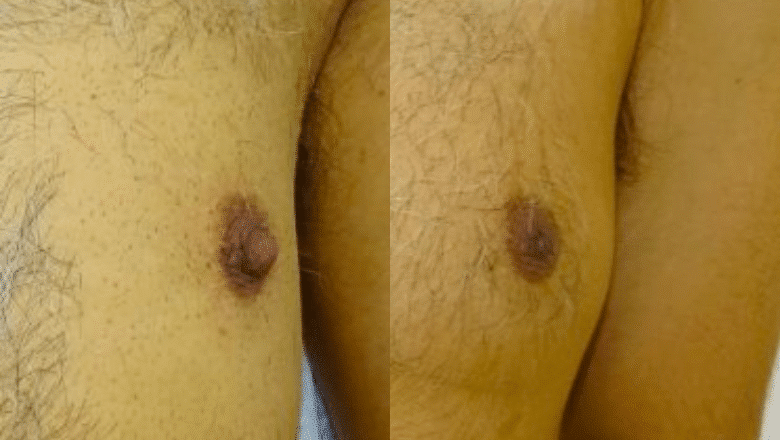
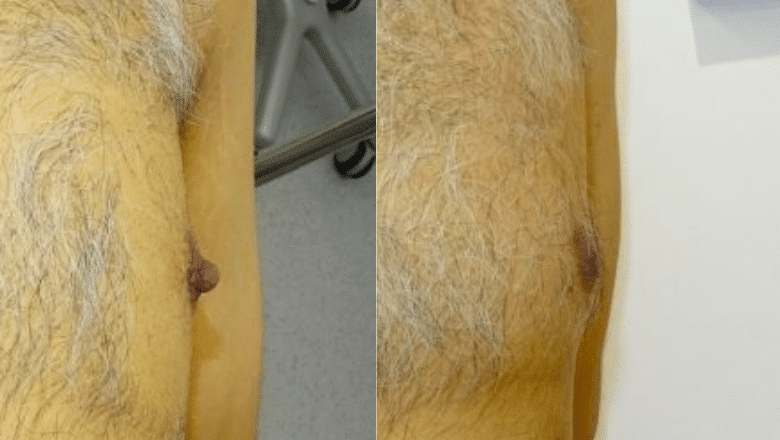
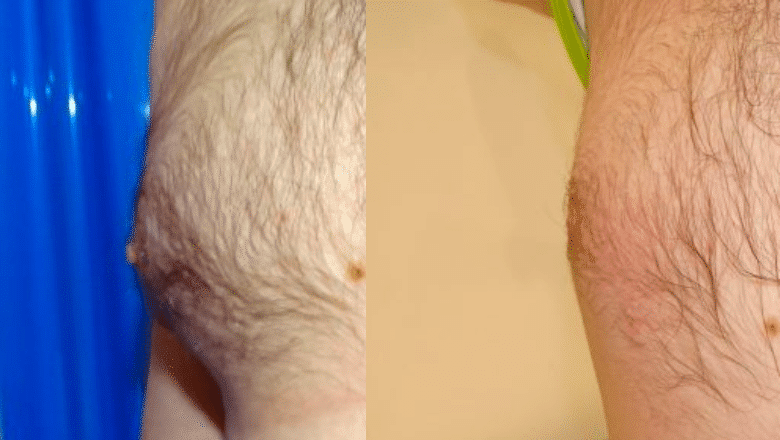
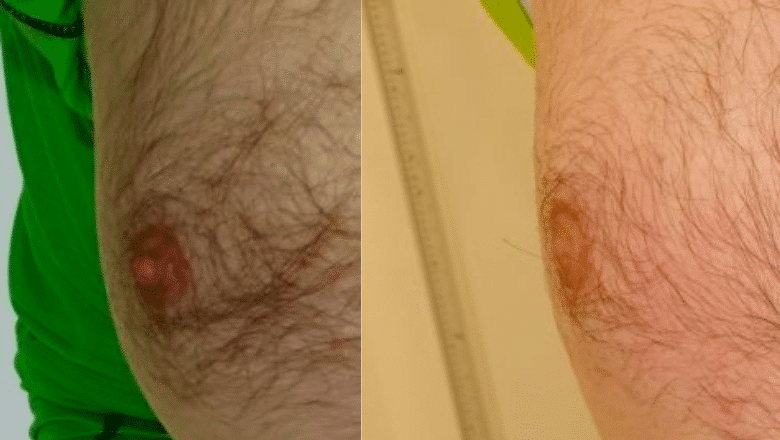
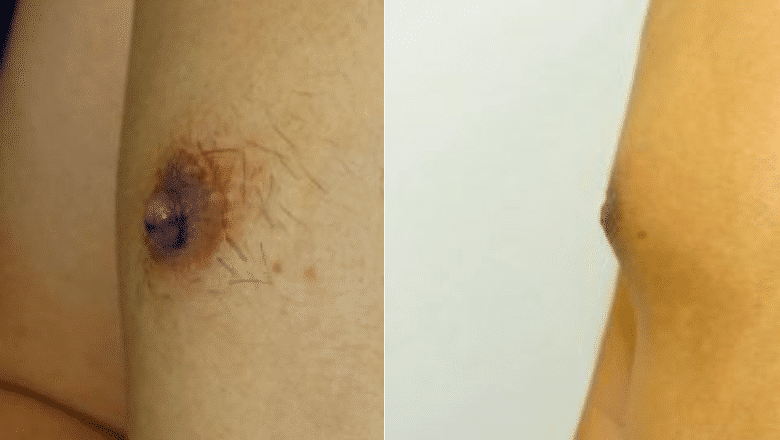
Benefits of Nipple Reduction
Nipple reduction surgery offers several benefits to those who are self-conscious about the size or shape of their nipples. Some of these benefits include:
Improved confidence and self-esteem
For many individuals, having large or prominent nipples can cause feelings of self-consciousness or embarrassment. Nipple reduction surgery can help improve self-esteem and confidence by creating a more proportionate and aesthetically pleasing appearance.
Enhanced breast appearance
Reducing the size of the nipples can improve the overall appearance of the breasts. This can lead to a more balanced and harmonious look, particularly in combination with other breast procedures such as augmentation, reduction, or lift.
Better-fitting clothing
Large or protruding nipples may cause discomfort or difficulty in finding properly fitting clothing, particularly bras and swimsuits. Nipple reduction surgery can alleviate these issues and make it easier to find comfortable and flattering clothing options.
Reduced physical discomfort
In some cases, large or elongated nipples may cause irritation or discomfort during physical activities, especially when rubbing against clothing. Nipple reduction surgery can help alleviate this discomfort by creating a smaller, more manageable nipple size.
Permanent results
Unlike non-surgical treatments, nipple reduction surgery offers long-lasting results. The changes made to the size and shape of the nipples during surgery are generally permanent, barring significant weight fluctuations or hormonal changes that may affect breast tissue.
Minimal scarring
Nipple reduction surgery typically involves small, well-hidden incisions, which results in minimal scarring. This allows patients to enjoy the benefits of the procedure without prominent visible scars.
RELATED: Nipple Reshaping – Benefits Of Areola & Nipple Surgery
Ideal Candidates for Nipple Reduction
Ideal candidates for nipple reduction surgery are individuals who:
Are in good overall health
Candidates should be in good physical health and free from any medical conditions that could interfere with the healing process or increase the risk of complications during surgery.
Have realistic expectations
It is crucial to have a clear understanding of the potential outcomes of nipple reduction surgery and maintain realistic expectations about the results. A qualified plastic surgeon at Centre for Surgery can help you determine what changes are achievable based on your unique circumstances.
Are emotionally stable
Emotional stability is essential when considering any cosmetic procedure. Candidates should be able to cope with the physical and emotional aspects of the surgery and recovery process.
Are bothered by the size, shape, or appearance of their nipples
Nipple reduction surgery is designed for individuals who feel self-conscious about their nipples’ size or shape and are seeking a more balanced and aesthetically pleasing appearance.
Have fully developed breasts
It is generally recommended that candidates for nipple reduction surgery have fully developed breasts. This is typically the case for women who are at least 18 years old, although breast development may continue into the early 20s for some individuals.
Are not currently pregnant or breastfeeding
Candidates should not be pregnant or breastfeeding at the time of the surgery. It is recommended to wait until you have finished breastfeeding and your breast size has stabilised before considering nipple reduction surgery.
Are non-smokers or willing to quit smoking
Smoking can increase the risk of complications during surgery and negatively impact the healing process. It is recommended that candidates quit smoking several weeks before and after the procedure to promote optimal healing.
Nipple Reduction Surgical Techniques
Nipple reduction surgery is easily and comfortably performed under a local anaesthetic. This means you will be awake but numb in the area of the procedure. You can also have the choice of having a general anaesthetic if you would prefer to be asleep for the procedure – ask your surgeon at the consultation, and this can be arranged for you. Nipple reduction is performed as a day case so you can return home on the same day as the procedure. Nipple reduction is most commonly carried out under a local anaesthetic as it is a short procedure that takes roughly 30 minutes for each side.
Nipple reduction surgery involves various surgical techniques that can be tailored to address each patient’s specific concerns and desired outcomes. Below are some of the common surgical techniques used in nipple reduction surgery:
Circumferential Incision Technique
This technique involves making an incision around the entire circumference of the nipple. The surgeon removes a ring of tissue from around the nipple and then sutures the remaining skin together to create a smaller, more proportionate nipple size. This method is particularly effective for patients with wide or enlarged nipples, as it reduces the overall diameter.
Wedge Excision Technique
The wedge excision technique involves removing a wedge-shaped section of tissue from the nipple. This method is particularly useful for patients with elongated or drooping nipples, as it allows the surgeon to shorten the nipple’s length. After removing the wedge of tissue, the surgeon sutures the remaining skin together to create a shorter, more aesthetically pleasing nipple.
Flap Technique
In this technique, the surgeon creates small flaps of tissue from the base of the nipple. The flaps are then repositioned and sutured together to reduce the nipple’s size and projection. This method is suitable for patients who wish to reduce both the width and projection of their nipples.
Pedicle Technique
The pedicle technique is often used in combination with other nipple reduction methods. It involves preserving a portion of the nipple’s blood supply and nerves while reshaping the nipple. This method helps maintain nipple sensation and, in some cases, the ability to breastfeed after surgery.
Combined Techniques
In some cases, a combination of the above techniques may be used to achieve the desired results. The surgeon will carefully assess the patient’s anatomy and specific concerns to develop a customized surgical plan that addresses their individual needs.

Recovery after Nipple Reduction
Recovery after nipple reduction surgery generally involves several stages, with the overall process varying from patient to patient. Here are some general guidelines to help you understand what to expect during recovery:
Immediate Post-Surgery
Following the procedure, you may experience mild discomfort, swelling, and bruising around the nipples. Your surgeon may prescribe pain medications to help manage any pain or discomfort. You will likely have dressings or bandages covering the incisions, which will need to be kept clean and dry.
First Week
In the first week after surgery, you should take it easy and avoid any strenuous activities or heavy lifting. You may gradually return to light daily activities as tolerated. It’s important to follow your surgeon’s instructions regarding wound care and changing dressings. You may also be advised to wear a supportive bra or sports bra during this time to minimize swelling and provide support to the healing breasts.
Two to Four Weeks
Swelling and bruising should begin to subside during this period. You will likely be able to return to work and resume most daily activities, although you should still avoid strenuous exercise or heavy lifting. Your surgeon may advise you to continue wearing a supportive bra for several weeks to ensure proper healing and support.
Six Weeks and Beyond
By six weeks post-surgery, most of the swelling should have resolved, and you should be able to resume all normal activities, including exercise. The incision lines will begin to fade, although they may continue to improve in appearance for several months.
Throughout the recovery process, following your surgeon’s recommendations and attending any scheduled follow-up appointments to monitor your healing progress is essential. Keep in mind that individual recovery times may vary, and it’s crucial to listen to your body and not rush the healing process.
Nipple Reduction Surgery Costs London - How Much Does Nipple Reduction Cost in London UK? Prices & Fees
At Centre for Surgery, every nipple reduction surgery is tailored to meet your specific needs. Our team will provide you with a comprehensive package price that takes into account the type of procedure you require, the hospital you select, as well as the length of your surgery and stay. The price also includes aftercare, follow-up, and any additional post-operative services that may be necessary.
Following your initial consultation, we will provide you with a detailed quote that outlines all costs associated with your surgery, including the fees charged by the surgeon, anaesthetist, surgical assistant, and facility.
If you would like an estimate for the cost of your own nipple reduction surgery in London, please don’t hesitate to contact us at 0207 993 4849 and speak to one of our friendly patient coordinators.
Enhancing Your Aesthetic Journey: Exploring Nipple Reduction and Its Complementary Surgeries
Nipple reduction surgery, while effective on its own for addressing specific concerns related to the size and shape of the nipples, often serves as a component of a broader aesthetic strategy. This procedure can be seamlessly integrated with other cosmetic surgeries to achieve a more comprehensive transformation. Among these, breast augmentation and breast lifts are two of the most commonly paired treatments, each offering unique benefits that complement the refinements of nipple reduction.
Breast Augmentation
Breast augmentation is a highly sought-after procedure for those looking to enhance the overall volume of their breasts. This surgery is not solely about increasing size; it also plays a crucial role in correcting imbalances and asymmetries, ensuring that both breasts are in harmony with each other in terms of size and shape.

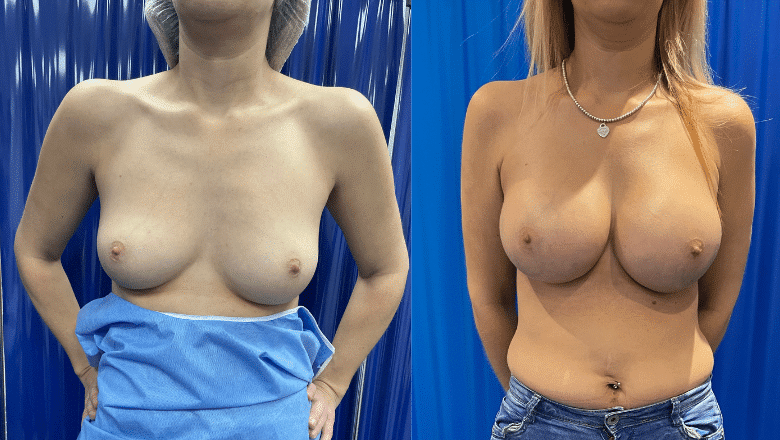




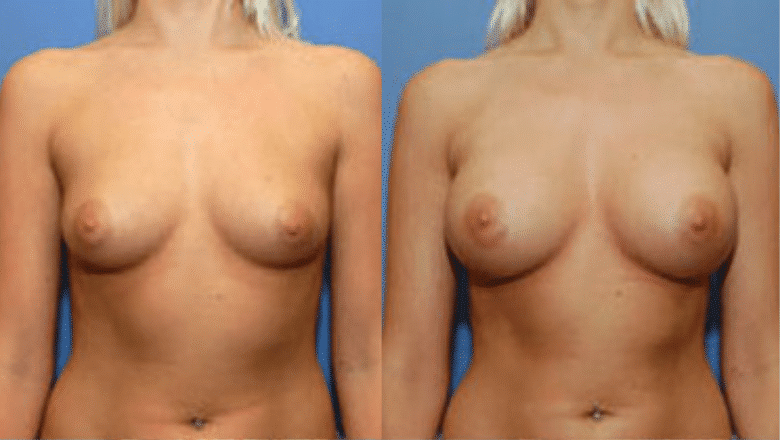

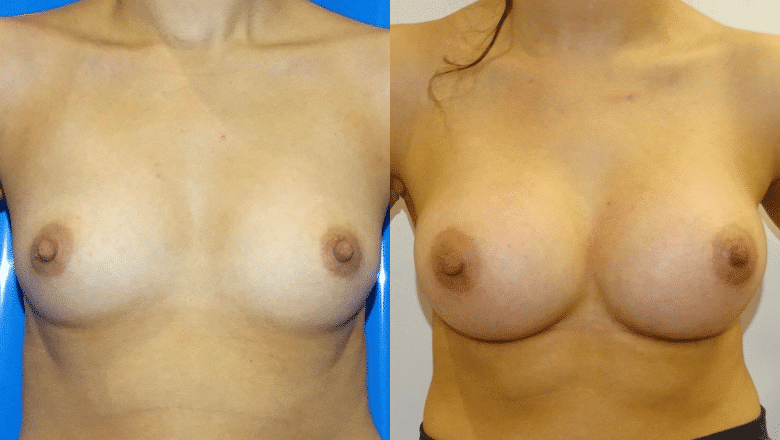


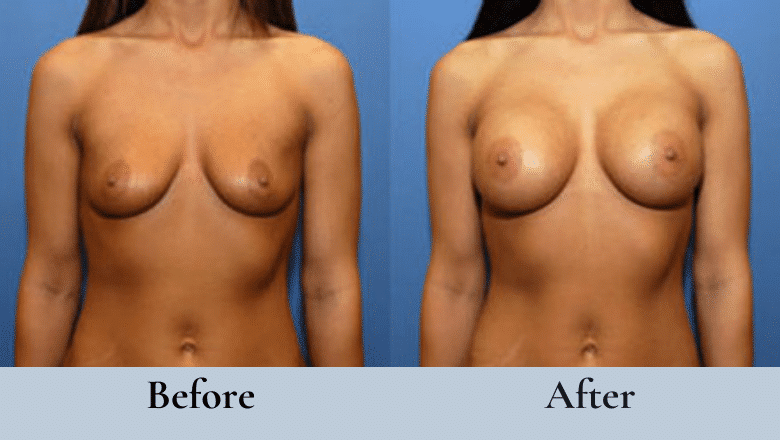



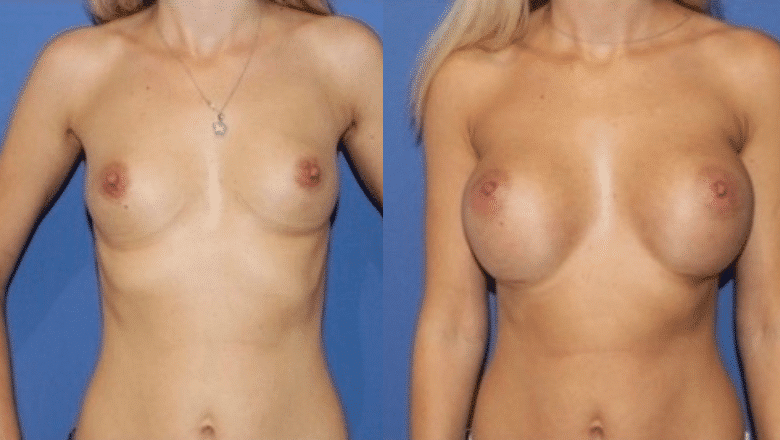
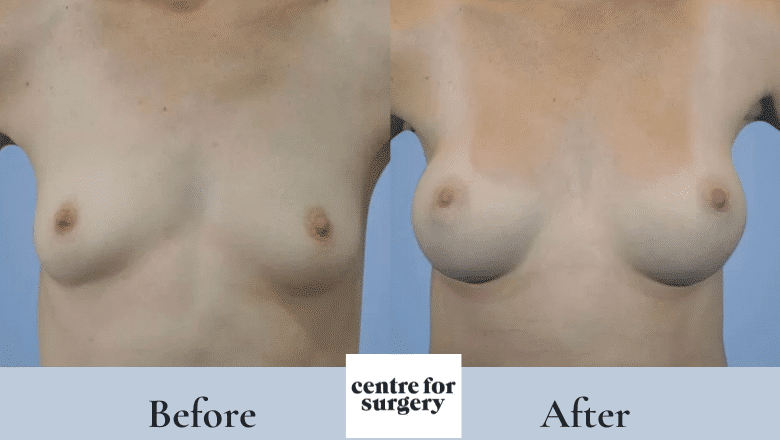



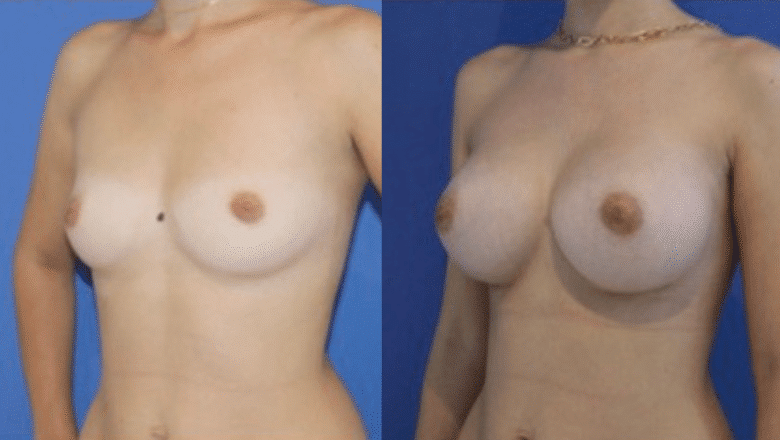



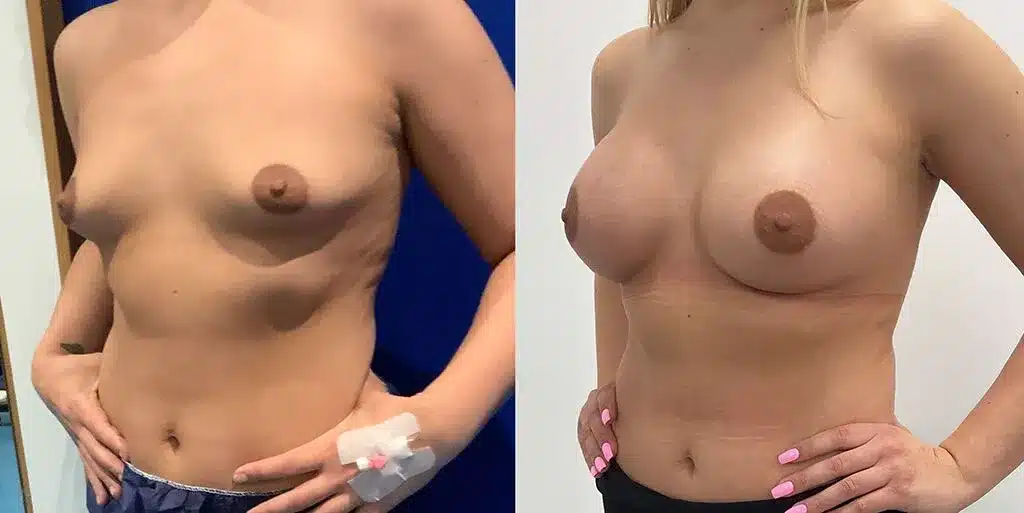
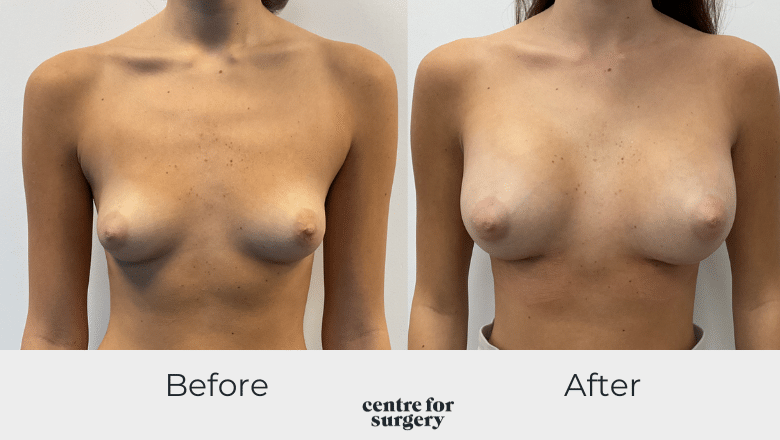


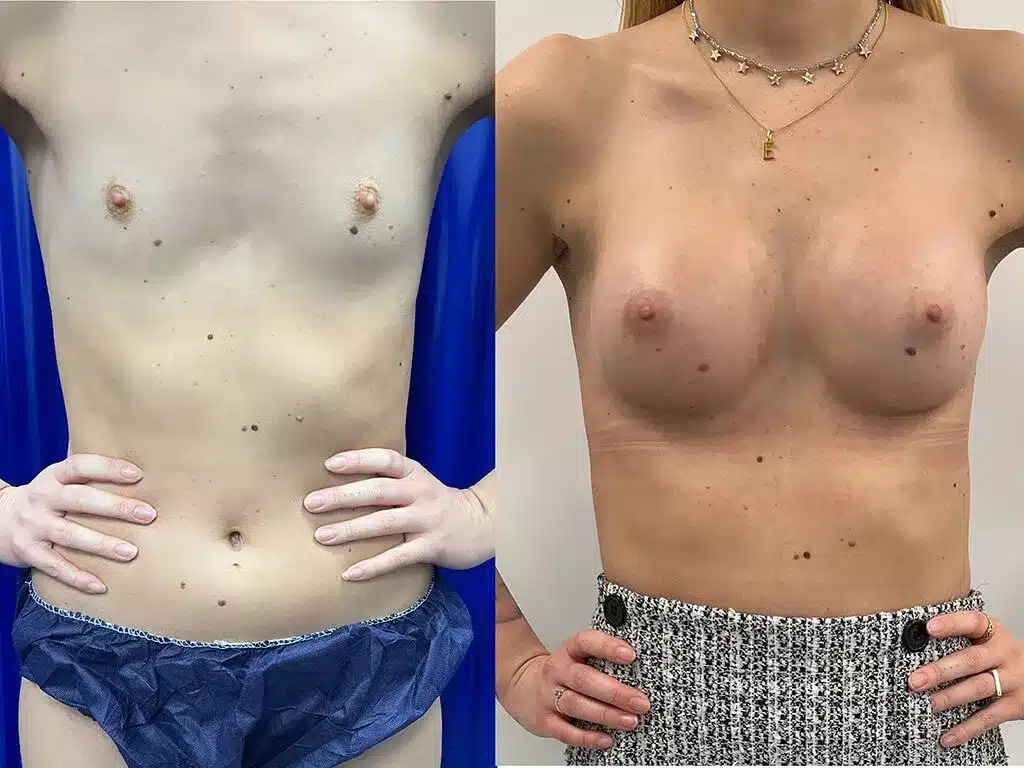
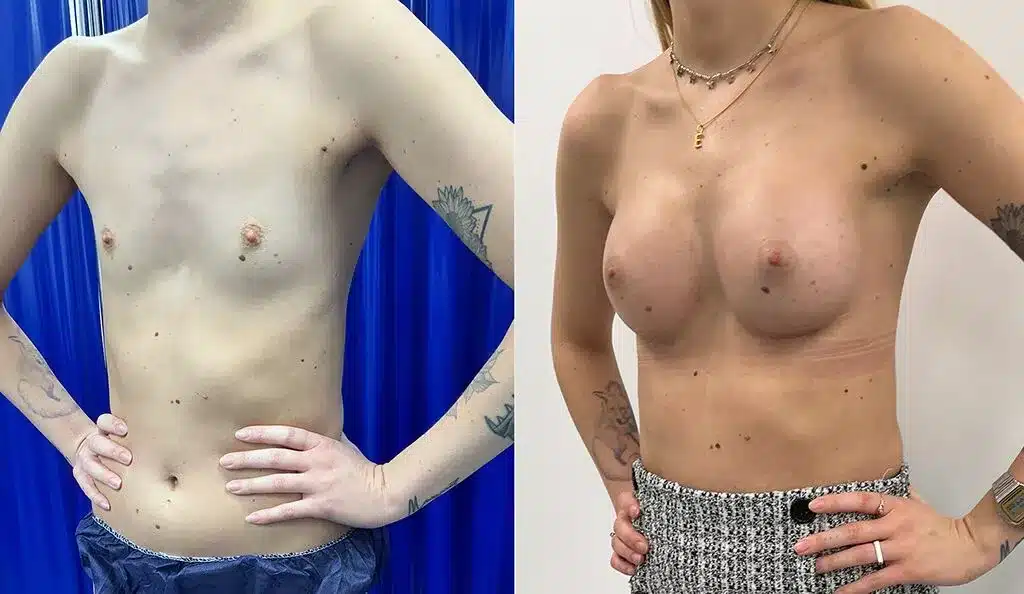
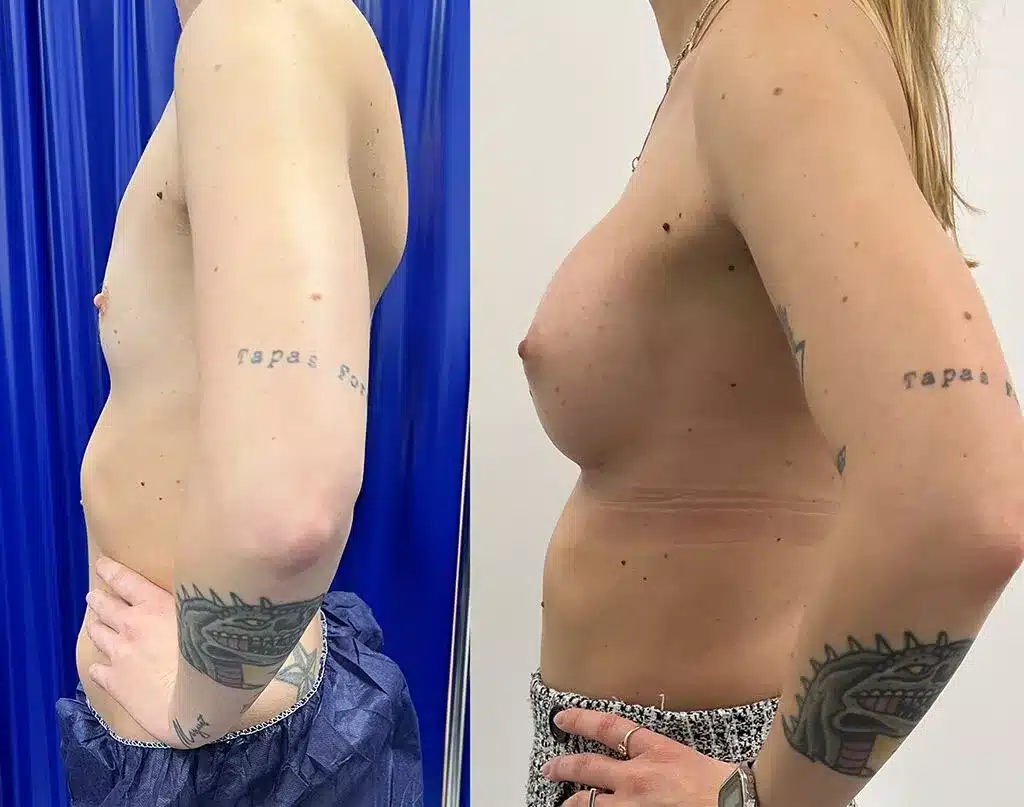
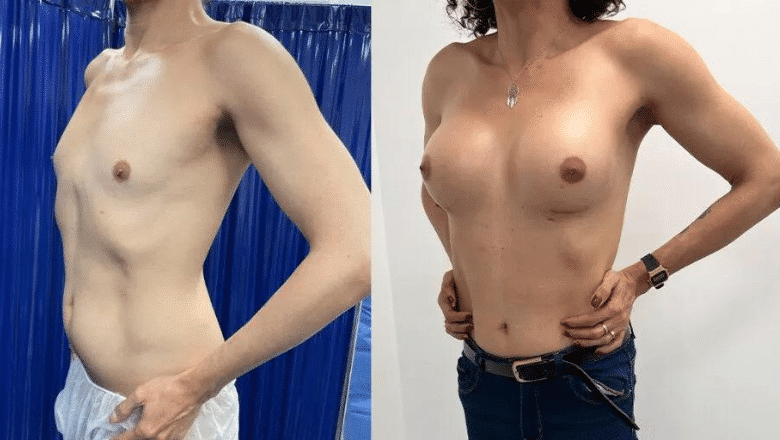
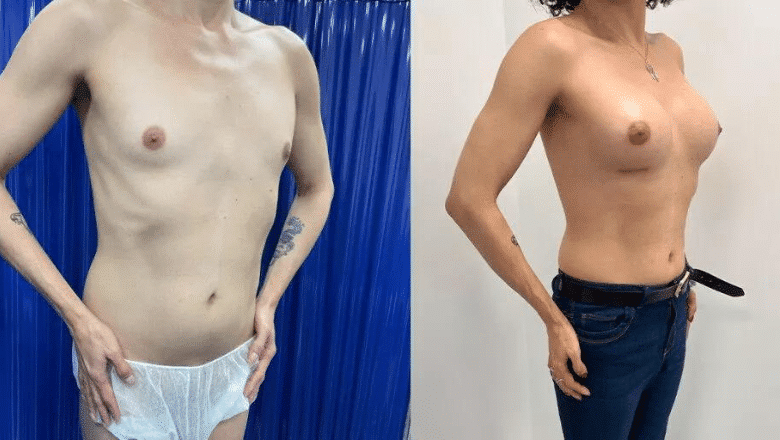
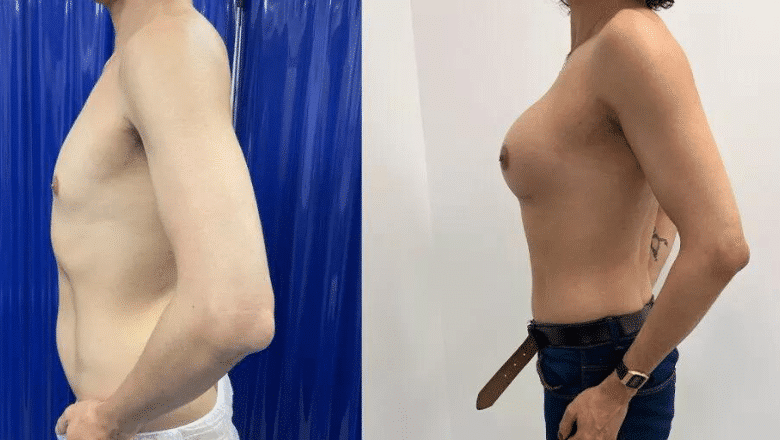
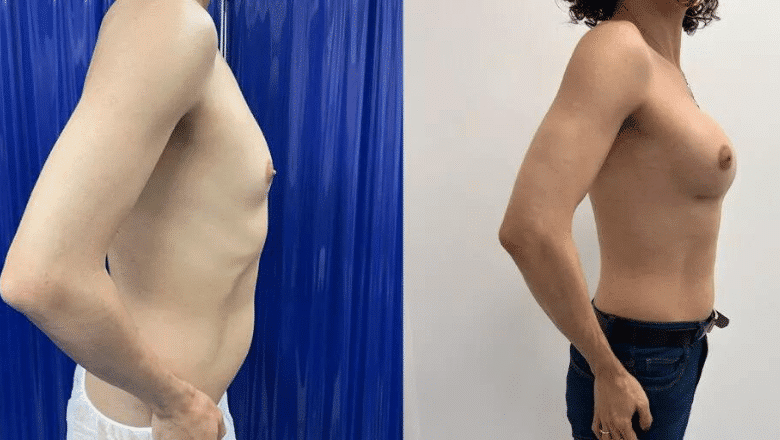
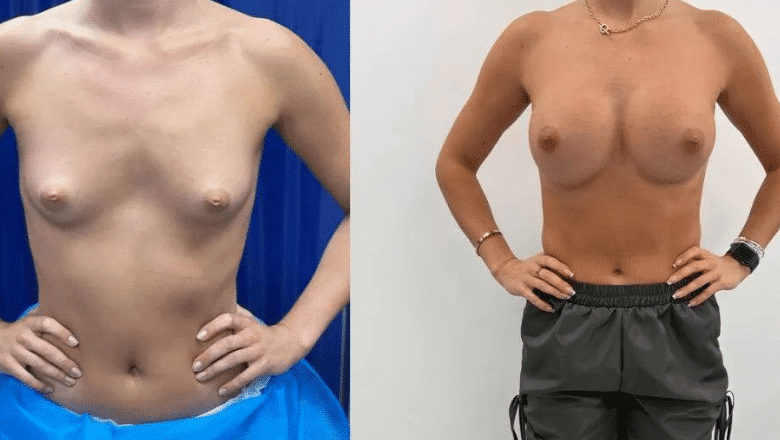
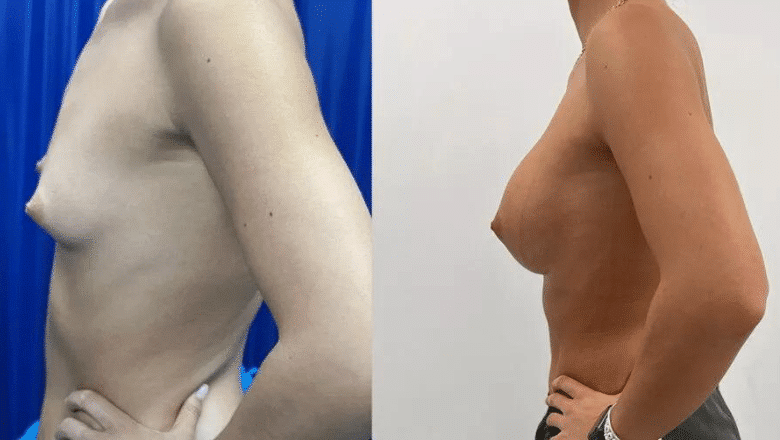
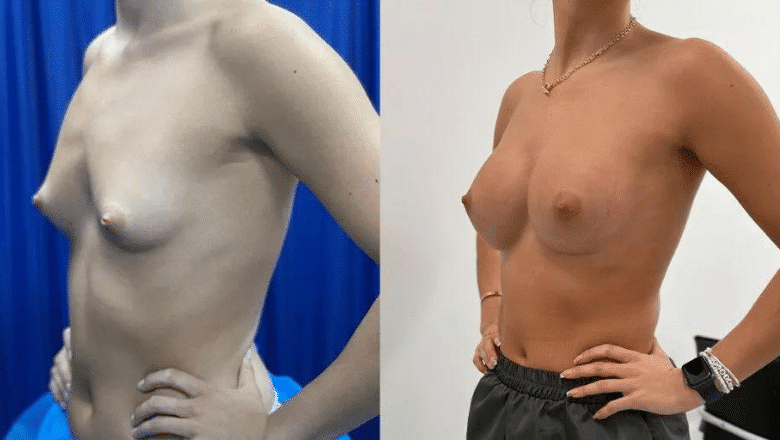


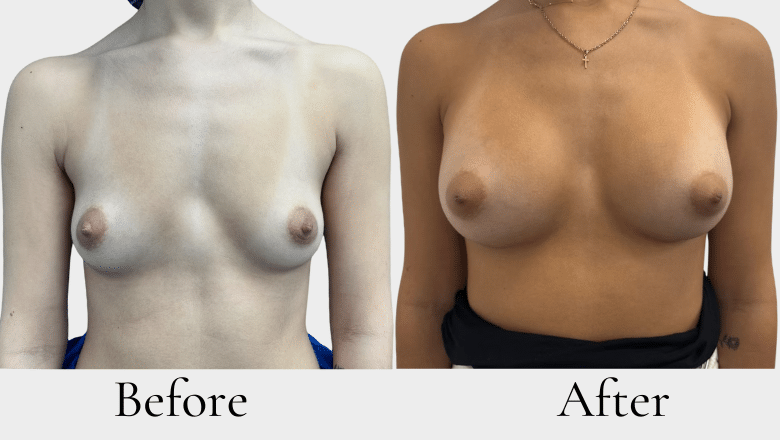

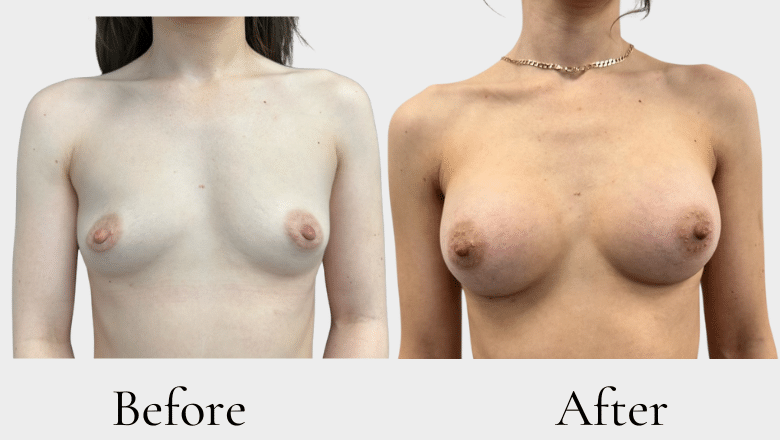


Surgeons can employ various techniques, including implants and fat transfer, to tailor the outcome to each individual’s desires and body type. The versatility of breast augmentation makes it a powerful option for individuals aiming to not only enlarge their breasts but also to sculpt a more balanced and aesthetically pleasing silhouette.
Breast Lift
A breast lift, or mastopexy, targets the common issue of sagging breasts, a concern for many women due to ageing, pregnancy, or weight fluctuations. By excising surplus skin and recontouring the breast tissue, this procedure elevates the breasts to a more youthful and uplifted position. The impact of a breast lift goes beyond the physical adjustments; it significantly boosts self-confidence and overall satisfaction with one’s appearance. The result is not just perkier breasts but also an enhanced quality of life, as women feel more comfortable and positive about their body image.
Nipple Reduction at Centre for Surgery
At Centre for Surgery, we pride ourselves on our commitment to delivering high-quality care, state-of-the-art facilities, and exceptional patient experience. Here are some reasons why you should choose us for your nipple reduction surgery:
Expertise
Our team of highly skilled and experienced plastic surgeons specialises in breast and nipple procedures, ensuring that you receive the highest quality of care and the best possible results.
Personalised Approach
We understand that each patient is unique, and we tailor our approach to meet your specific needs and goals. Our surgeons will work closely with you to develop a customised treatment plan that takes into consideration your anatomy, expectations, and desired outcomes.
Comprehensive Care
From your initial consultation to post-operative follow-up appointments, we offer comprehensive care and support throughout your nipple reduction journey. Our dedicated staff is available to answer any questions and address any concerns you may have along the way.
Advanced Techniques
We utilise the latest surgical techniques and technology to ensure the best possible outcomes with minimal scarring and downtime.
Focus on Safety
At Centre for Surgery, your safety is our top priority. We adhere to strict safety protocols and maintain the highest standards of care to ensure a safe and successful procedure.
Comfortable Environment
Our state-of-the-art facilities are designed to provide a comfortable and relaxing environment for your surgery. We strive to make your experience as stress-free and pleasant as possible.
Transparent Pricing
We offer transparent pricing with no hidden fees, ensuring you have a clear understanding of the costs involved in your procedure.
Aftercare and Support
Our commitment to your well-being extends beyond the operating room. We provide comprehensive aftercare services and support to help you through the recovery process and ensure the best possible results.
FAQs
-
What is nipple reduction?Nipple reduction is a highly effective surgical procedure designed to reduce the projection of excessively protruding nipples with preservation of sensation to the nipple. The procedure can help to reduce the embarrassment associated with overly protruding nipples which often be visible under clothing. Nipple reduction is easily performed under a local anaesthetic and the recovery period is very short which allows you to return to everyday activities quickly.
-
How is nipple reduction performed?Nipple surgery involves the removal of excess nipple tissue which is located at the base of the nipple followed by suture reconstruction which leads to a reduction in height of the nipple by combining the remaining nipple tissue with the underlying breast tissue. Nipple reduction surgery is a very effective and easily performed surgery and is most commonly performed under a local anaesthetic.
-
How are enlarged nipples treated?Enlarged nipples can be treated by carefully removing the skin and internal nipple tissue using radio frequency diathermy. The principle is the same as for reducing tissue in other areas of the body but nipple reduction is on a much smaller scale and the scarring is barely visible once healing has taken place. Up to 10% of women have some type of nipple related condition where they may be enlarged. This causes them to be visible beneath clothing which can be a source of embarrassment as well as causing pain and discomfort through rubbing on clothing. Men can also have enlarged nipples and in this case, the problem may be exacerbated by underlying extra breast tissue. This is known as gynaecomastia. With nipple reduction, the patient can experience an improvement in confidence and self esteem and relief from symptoms of pain and irritation. Nipple reduction techniques at Centre for Surgery can address all types of enlargement whilst preserving nipple sensation. Nipple reduction may be combined with a variety of other breast procedures including breast augmentation and mastopexy. The advantage of combined procedures means you won’t have to return and face the inconvenience of taking time out for another procedure.
-
Am I an ideal candidate for nipple reduction?Ideal for individuals who feel that the size of their nipples are big in relation to their breasts.
-
How is nipple reduction going to benefit me?The procedure corrects overly prominent, wide or puffy nipples – giving you more confidence when wearing tight fitting clothes.
-
What does nipple reduction surgery involve?The procedure involves surgical removal of part of the nipple tissue to reduce the size. The scars after the procedure are minimal and virtually undetectable as they are well hidden on the underside of the nipple where it meets the areola.
The nursing team will first admit you, record your blood pressure and other vitals, and prepare you for the procedure.
You will then meet with the surgeon, who will go through the details of the procedure again and answer any questions you may have
Pre-operative photos will be taken, and the surgeon will mark the area
The nipple is injected with a local anaesthetic to numb the area fully
The surgeon will make a small incision around the base of the nipple
The extra nipples tissue is surgically removed, and the remaining nipple tissue is placed closer to the breast tissue
The surgeon will apply suture fixation techniques to secure the nipple in its new position giving rise to a smaller appearance
A sterile dressing will be applied to the nipples to protect the area from injury and potential infection during the healing phase.
You will be transferred to the recovery and discharge area for rest. Once you are ready to be discharged, you will be seen by the surgeon, who will explain the postoperative instructions to be followed after the procedure. You can leave the clinic accompanied by a family member or a friend.
Most people notice only mild discomfort after nipple reduction surgery. This is usually well controlled by simple over-the-counter medications such as paracetamol. You should be able to return to work and social activities within a few days. -
How long does the nipple reduction procedure take?It is a very quick procedure and usually takes 20 minutes to treat each nipple.
-
Is Nipple Reduction Painful?The procedure is normally performed under local anaesthetic so you will not feel any discomfort, however can also be performed under a light general anaesthetic.
-
How Much Time Is Required for Nipples to Fully Heal After a Reduction Procedure?After undergoing nipple reduction surgery, patients can expect a healing period of approximately 1 to 2 weeks. It's crucial for optimal recovery to adhere strictly to the aftercare guidelines provided by your surgeon. These instructions will cover aspects such as the appropriate time to commence showering post-surgery and when it's safe to return to your regular exercise regime. Following these guidelines ensures a smoother and more efficient healing process, helping you achieve the best possible outcomes from your surgery.
-
Are the Outcomes of Nipple Reduction Surgery Considered Permanent?Indeed, nipple reduction surgery offers a lasting resolution to concerns regarding nipple size or shape. However, it's essential to acknowledge that various factors, including significant weight fluctuations, pregnancy, and the process of breastfeeding, might influence the surgery's results over time. While the procedure itself provides permanent changes, these external factors can lead to adjustments in the appearance of your nipples after the surgery.
-
What Should I Expect Regarding Scarring Post-Nipple Reduction Surgery?The technique used in nipple reduction surgery is designed to be minimally invasive, resulting in only a small, thin scar. This scar is typically very subtle and is expected to become less noticeable as it gradually fades over time. The discreet nature of the scarring means that it should not be a significant concern for most patients, as it tends to blend well with the surrounding skin.
-
Is There a Risk of Losing Sensation in My Nipples After Reduction Surgery?It is common to experience a temporary decrease in nipple sensitivity following the procedure. As the healing process progresses, sensation in the nipples generally begins to return. However, the timeline for the full restoration of sensitivity can vary widely among individuals. While some patients may notice a quick return to normal sensation, others might find it takes longer to regain complete sensitivity in their nipples.
-
Can Nipple Reduction Surgery Impact My Ability to Breastfeed in the Future?One of the primary concerns for women considering nipple reduction surgery is its potential effect on breastfeeding capabilities. Surgeons specializsing in this procedure are meticulous in their efforts to preserve the milk ducts and nerves, aiming to maintain the patient's ability to breastfeed post-surgery. Although some women may notice a reduced capacity for breastfeeding after undergoing nipple reduction, it is relatively rare for individuals to become completely unable to breastfeed. The careful preservation of essential structures during surgery maximizes the chances of successful breastfeeding in the future.
-
Is It Advisable to Achieve a Specific Weight Before Undergoing Nipple Reduction Surgery?Before deciding on nipple reduction surgery, ensuring that you are at or near your ideal weight is beneficial. Being within a healthy weight range not only contributes to a smoother and quicker recovery but also helps in maintaining the surgery's results. Weight stability is key, as significant weight changes post-surgery can impact the appearance and outcomes of the nipple reduction.
What To Expect
The consultation
The first step is to have a consultation with one of our expert surgeons for nipple reduction. At the consultation, your surgeon will explain the procedure in detail and it involves. Your surgeon will want to learn more about what you hope to achieve from the procedure and also to explain the ideal treatment technique after a physical examination.
A number of measurements are taken of your enlarged nipples including assessment of the degree of protrusion. Your surgeon has experience in performing all the techniques of nipple reduction. The most appropriate choice will be made based on your degree of nipple enlargement. The surgeon will also give information on the location of the incisions for nipple reduction and also whether other breast procedures are to be combined. High-resolution photos will be taken and your surgeon may also use computer digital imaging. Your surgeon will take time to discuss the important risks and potential complications of nipple reduction surgery and what you can expect in the postoperative period.
It is useful to keep a list of questions handy to ask the surgeon during the consultation. Examples include whether you are a good candidate for the procedure, what sort of result are you looking to achieve, what you can do to optimise results in the post-operative period, how much downtime is involved. You may also want to know how soon you can return to work after having inverted nipple reduction surgery. The surgeon will also take a full medical history which includes previous operations, current list of medicines taken and any potential allergies. This information will be used to decide on your suitability for the nipple reduction procedure. If you are deemed to be a suitable candidate for nipple surgery then we would recommend to spend a period of time to reflect on all the information given. We always recommend a minimum of a 2 week cool off period for to weigh up your options. All our prospective patients are more than welcome to have as many follow-up consultations after their initial consultation to make sure you are fully empowered with all the information to make an informed decision for proceeding with nipple surgery at Centre for Surgery.
Before the procedure
Once you have decided that inverted nipple correction is right for you, our preoperative assessment team will be in contact to prepare you for surgery.
The following are recommended actions to take:
- For 6 weeks beforehand, it is highly recommended to stop smoking as active smoking is associated with a number of risks including delayed wound healing which could result in wound infection.
- You should also avoid aspirin and all medicines containing aspirin for at least one week prior to the procedure.
- If you are having a general anaesthetic, for 6 hours before the procedure, you should refrain from eating any food or any type of drink apart from sips of clear fluid (water and tea/coffee without added milk) which is allowed for up to 2 hours before the procedure.
On the day of your procedure
Please aim to arrive for your nipple reduction procedure at the confirmed time. One of our nursing team will admit you for the procedure and will carry out a number of tasks including checking your blood pressure and other vital signs including pulse and temperature and then getting you changed into single-use clinic wear. The anaesthetist will then come in to assess you to make sure you are medically fit for the procedure. You will then be seen by your surgeon who will confirm the procedure to undertaken and you will sign the informed consent form. Skin marking and photos may be taken at this point.
Nipple reduction is a very commonly performed procedure at Centre for Surgery and is easily carried out under local anaesthetic as a day case if it is an isolated procedure. The procedure takes approximately 1 hour to perform but may take longer if combined with other procedures. During the procedure, your surgeon will make small incisions in the area on top of the nipple followed by gentle precise surgical removal to reduce size of the the nipple before closing the skin with dissolvable sutures.
After your procedure
After your nipple reduction procedure, our dedicated postoperative support team are available round the clock to answer any questions or concerns you may have. Our team will call you regularly for the first 2 weeks after your procedure to make sure your pain levels are well controlled and your healing is progressing as normal. Nipple reduction is associated with very little in the way of discomfort. Any soreness can be effectively controlled with tablet painkillers and the majority of our patients are very comfortable by the end of week 1. Your doctor may recommend a period of approximately 2-3 days off work. You should minimise any excessive physical activity for the first 2 weeks after surgery to help with the healing of the incisions and reduce swelling.
You may be required to wear a specialised postoperative dressing that maintains the position of the nipples in their corrected position.
You will attend for a postoperative check up with one of our nursing team at 7-10 days to review your surgical wound sites and ensure proper healing is taking place. Recommendations on treatments for scar healing may be given for optimal cosmesis. At 6 weeks you should begin to see your final results and you will see your surgeon for a comprehensive review and make sure your results are in line with your expectations.
Ask The Expert
Can Breast Reduction Help Prevent Breast Cancer?
Can You Get Breast Implants Under Local Anaesthetic?
MIA Femtech or Breast Augmentation with Local Anaesthetic: Which is Right for You?
How Much Does Areola Reduction Cost?
Sign up to our newsletter

